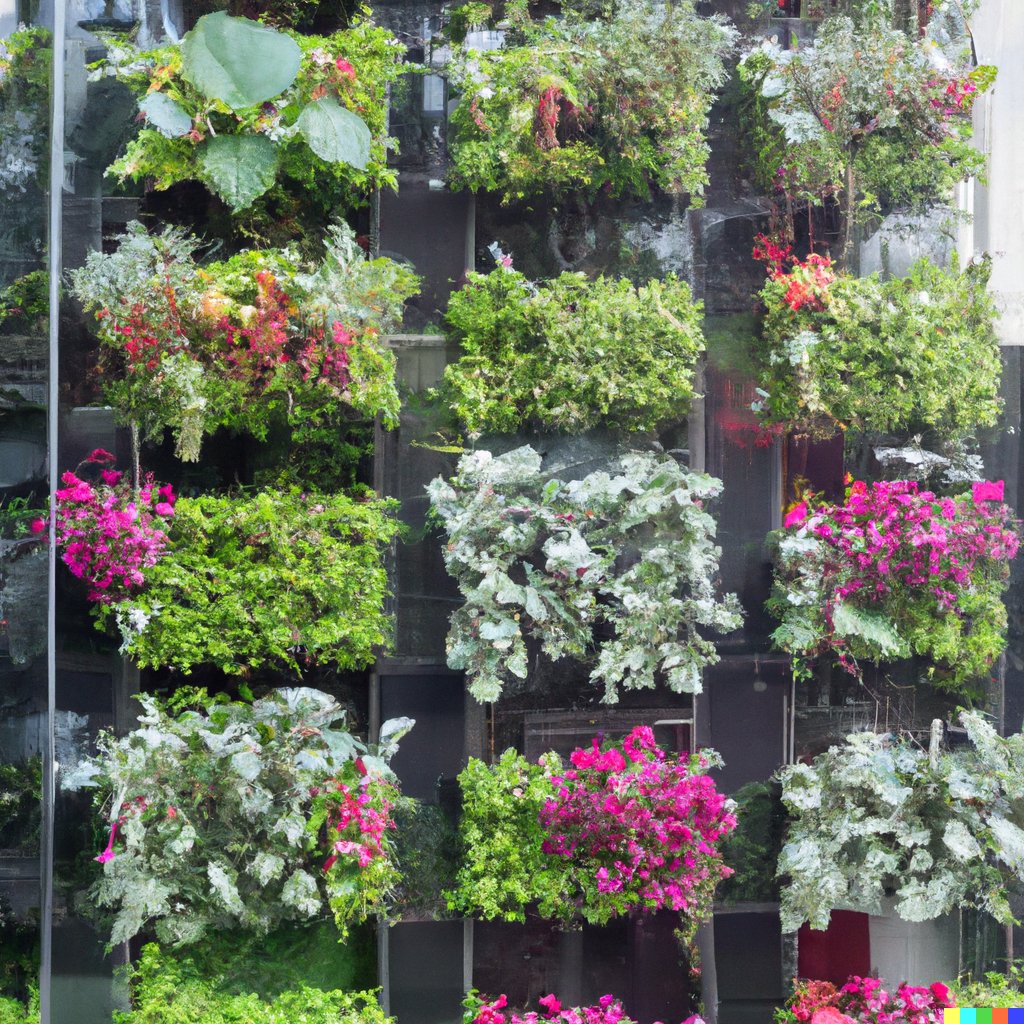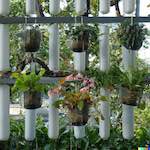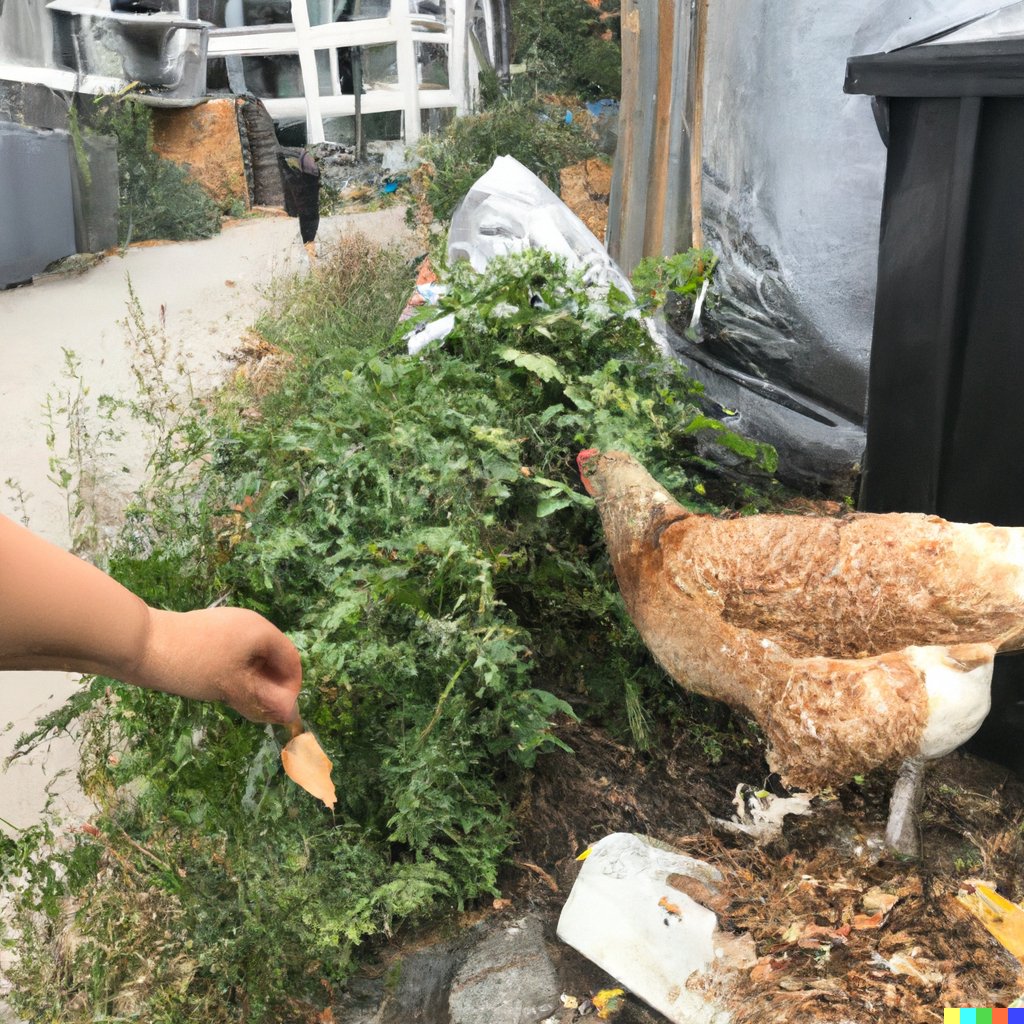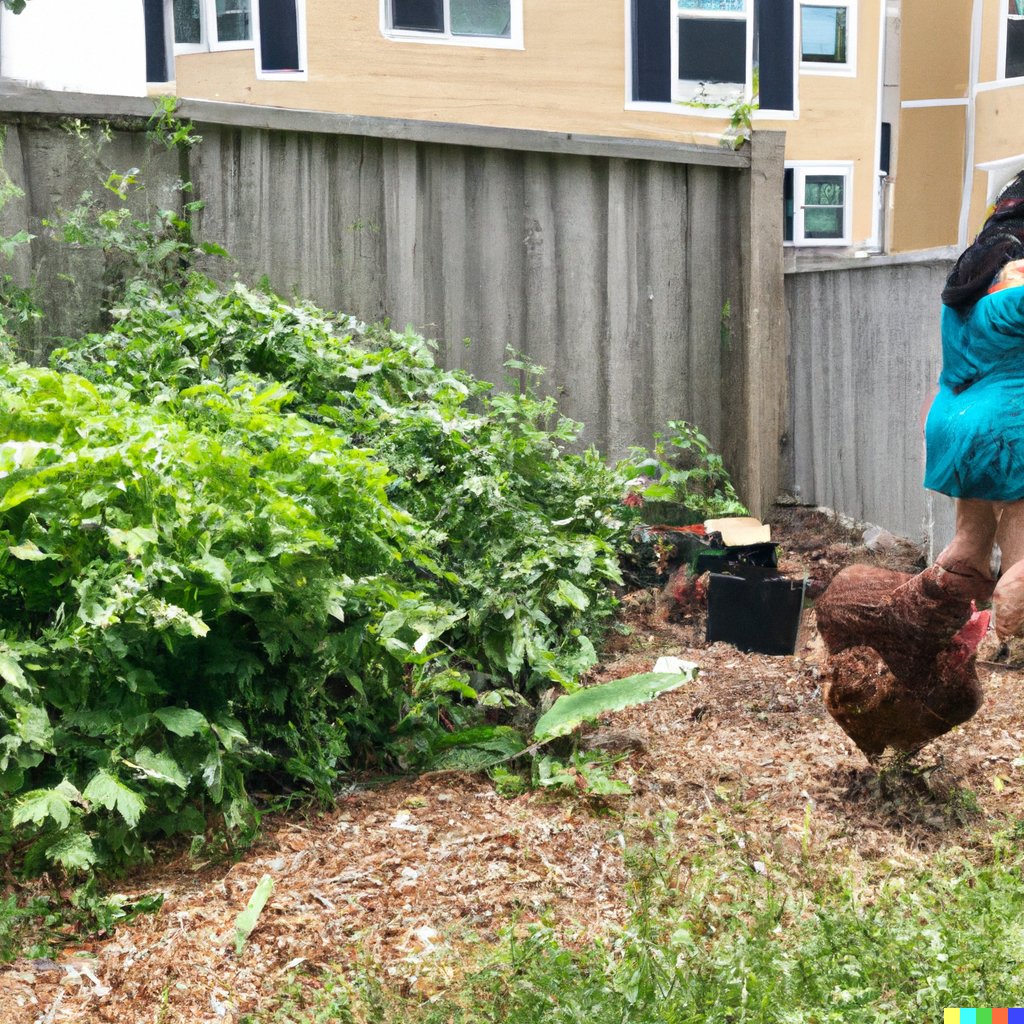
Are you tired of limited gardening space or struggling to grow plants in urban areas? Creating a vertical garden may be the solution for you. In this article, we will explore the benefits and simple steps to start your own vertical garden. Say goodbye to traditional gardening constraints and hello to a thriving, space-saving green oasis.
Choosing the Right Location
Where's the Best Place for Your Vertical Garden?
Choose the right spot for your vertical garden to promote healthy plant growth. Take into account the amount of sunlight in different parts of your house or outside. Provide enough sunlight for plant growth.
If you don't have much space, like a balcony or backyard, vertical gardening is great. Utilize vertical surfaces to optimize your space.
Different plants need different sun exposure. Some prefer direct sun, others like shade. Research the plants you want to grow and pick an appropriate spot.
Pro Tip: Check the sunlight patterns during the day before you decide where to put your vertical garden. That way, you can get the most optimal sunlight exposure for the plants.
Building a vertical garden won't make you an architect, but it's a good start for those who want a greener home.
Deciding on the Garden Structure
Choosing the layout of your vertical garden is vital for a successful green space. Decide what structure best fits your needs and likes. We'll explore options such as wall-mounted planters, trellises, hanging pots, and shelving units.
Wall-mounted planters are attached to walls and are great for growing plants. Trellises provide support for climbing plants. Hanging pots make use of overhead space. Shelving units make an organized display.
Light exposure, irrigation systems, and access to water sources are all important to consider. These details determine how well your vertical garden grows.
A friend of mine planned a vertical garden with trellises. They were perfect for the variety of plants he wanted. The trellises created an attractive background and his veggies looked great with flowering vines. His garden was a tranquil and serene escape in his own home.
Now that you know more about structure, it's time to pick out the perfect plants for your vertical garden!
Selecting Suitable Plants
When picking plants for your vertical garden, it is imperative to make decisions that align with your space's sunlight conditions and aesthetic preferences. Explore an assortment of options, such as herbs, succulents, ferns, and trailing vines. Make sure to match the plants to their desired growing conditions and maintenance needs for successful growth. Opt for varieties that thrive in limited space and can adapt to vertical gardening environments. By carefully selecting the right plants, you can create a beautiful and flourishing vertical garden.
Pro Tip: Monitor the sunlight exposure in different areas of your vertical garden throughout the day and adjust plant placements accordingly. Be prepared for some hard work, for setting up a vertical garden is like constructing a green skyscraper - minus the million-dollar view.
Preparing the Garden Structure
- Step 1: Installation. Pick a sturdy, wall-mounted setup that fits your desired number of plants. Anchor securely.
- Step 2: Plant Support. Attach a plant support system to the vertical garden structure. Protect your plants as they grow.
- Step 3: Structural Strength. Check for any weak points that need additional support. Make adjustments or additions for stability and longevity.
For optimum results, consider: alignment, spacing between plants, and proper drainage. Aesthetically pleasing and functional vertical gardens await!
True History: Vertical gardens are centuries old! Babylon and Rome popularized them for practical and aesthetic reasons. Today, urban dwellers are taking advantage of limited space with innovative green spaces.
Finally, the right growing medium is key. Choose from soil, sand, or a muddy mess in your backyard - so your plants can thrive!
Choosing Quality Growing Medium
For optimal growth of your vertical garden, selecting a high-quality growing medium is key!
Six factors to consider:
- Well-draining soil for excess water drainage.
- Nutrient-rich composition for nourishing plants.
- Potting soil for better drainage in containers.
- Compost for more fertility and moisture.
- Garden soil may be too heavy or wet.
- Balanced pH levels for plants' needs.
Also, texture and density matter. Make an informed choice to achieve success in your vertical garden! Studies show using appropriate growing mediums improves plant growth and productivity. So get ready for the up and down of vertical container gardening!
Planting in Vertical Containers
Vertical containers offer a great way to cultivate plants where space is limited. Utilize hanging baskets and wall-mounted pockets to increase planting options. Plus, you can easily access, maintain, and harvest crops.
To achieve success, it's key to pick plants that fit the size and growth habit of your vertical garden. Also, watering is a must to avoid water runoff and keep soil moisture. Organic fertilizers are a good idea too, to ensure plants are healthy without taking up too much space.
Vertical gardening is trending for several reasons! It maximizes small spaces and improves air quality. For instance, a research by The University of Texas at Arlington indicated green walls in urban areas dropped indoor temperatures by 10 degrees Fahrenheit, with an added bonus of aesthetics.
You need to water your vertical garden regularly, because plants are like humans - they need water to survive, just like you need coffee to function in the morning.
Establishing a Watering Routine
Establishing a Regular Watering Schedule:
Ensuring proper maintenance of your vertical garden is essential. Follow these 5 steps to provide your plants with necessary hydration for optimal growth:
- Check the moisture level regularly. Use a moisture meter or insert your finger to check if it is dry or damp. This will tell you when to water.
- Water frequently. Vertical gardens dry out faster due to sun exposure and air circulation. So, water them daily or every other day.
- Hydrate thoroughly. When watering, make sure each plant gets enough to reach its root system. Aim for thoroughness without excessive runoff.
- Consider an irrigation system. This will simplify the routine and prevent over- or under-watering.
- Observe your plants' response. Adjust the routine based on their health and growth.
Besides regular watering, consider proper sunlight, fertilization, and pest control. Focus on regular watering and optimal moisture levels for healthy growth. Here are some practical tips:
- Use mulch around plants. Mulching retains soil moisture, prevents weed growth, and protects against extreme temperatures.
- Water at the right time. Early morning or evening is best for effective water supply to the roots.
- Adjust your routine with seasonal changes. Increase frequency in hot and dry periods and decrease it when cooler and wetter.
Follow these suggestions for a successful vertical garden. Sprinkle some fertilizer and watch it grow!
Fertilizing the Vertical Garden
Sprucing Up Vertical Garden Growth with Nutrients
For optimal growth of your vertical garden, it's important to provide a balanced nutrition regime. Achieve this by using either liquid fertilizer or slow-release granules mixed into the soil during planting. These approaches ensure essential nutrients for sustained plant health and vigor.
A table outlining different fertilizing options for vertical gardens:
| Fertilizer Type | Application Method | Advantages |
|---|---|---|
| Liquid fertilizer | Dilute in water and administer | Quick absorption of nutrients |
| Slow-release granules | Directly | Gradual nutrient release |
Utilizing these fertilizing methods will give your vertical garden the nourishment it needs to thrive. Liquid fertilizer offers rapid nutrient absorption, while slow-release granules guarantee a continuous supply of essential elements over time.
Fun fact! According to the Journal of Plant Nutrition, organic-based slow-release fertilizers promote healthier growth in plants compared to synthetic alternatives.
Regular maintenance and pruning are essential for a successful vertical garden, just like how cutting out toxic people is the key to a thriving social life.
Regular Maintenance and Pruning
Maintaining a vibrant vertical garden requires careful attention to detail. Regular upkeep and pruning are essential to keep your plants healthy and free of overgrowth. Prune dead leaves and remove spent flowers to encourage new growth.
To promote tidiness, regular maintenance is key. Don't forget to be a 'plant detective' and protect your plants from any unwanted visitors!
Monitoring for Pests and Diseases
Monitoring your Vertical Garden for Health
Regularly inspect your vertical garden for pests & diseases. Use traps or sticky boards to detect invaders. Take proactive steps to prevent illness - use sterile soil, clean tools & install mesh barriers. If signs appear, act quickly to remove or treat affected plants.
Sunlight is also essential for success - without it, plants would be in the dark. University of Illinois Extension stresses early intervention for effective pest management in gardens.
Importance of Sunlight
Sunlight is key for your vertical garden's well-being. It is necessary for photosynthesis, when plants turn sunlight into energy. To keep plants healthy, it's important to make sure your vertical garden has the right amount of sunlight. The amount and best exposure depend on what type of plants you choose. So, research their specific sunlight needs.
To make sure your vertical garden grows and develops, pay attention to each plant's requirements. Some may need more sun than others, and some may like partial shade. Move your garden around to get the most sun throughout the day. Think of nearby buildings or trees that could cast shadows and lessen sunlight.
In addition to providing energy, sunlight helps air circulate and stops moisture from building up in foliage. That means fewer diseases and pests that like wet places. Plus, it brightens up flowering plants' colors and makes them bloom better.
Don't miss out on the benefits of proper sunlight for your vertical garden. Make sure it gets the right amount of sunshine and exposure to create a thriving oasis, and enjoy the beauty and freshness it brings. Start your vertical garden today and give it all the sun it needs!
Structural Considerations for Vertical Gardening
Structural stability and weight capacity are key for vertical gardening. Assess wall strength and installation quality for safety. Consider factors like sunlight exposure and wind patterns. Regularly check weight distribution and replace faulty parts. Ensure proper irrigation and drainage for structural integrity and plant health.
With these considerations, you can make a thriving and safe vertical garden! Get ready to get your hands dirty and make your vertical garden flourish!
Soil and Compost Mix Benefits
Soil and compost mix ups provide many advantages for vertical gardens. It enhances the quality of the growing medium, strengthens soil composition, and maximizes the value of compost. The mix improves drainage, adds nutrients, and helps plants grow better.
The advantages of using a soil and compost mix in vertical gardens include:
- Better growing medium quality:
- Keeps moisture in.
- Gives roots air to develop.
- Healthy soil composition:
- Balances pH levels for plants' health.
- Gives plants minerals and nutrients.
- Making the most of compost:
- Uses organic matter well.
- Encourages decomposition of waste.
The mix also stops waterlogging and ensures there's enough moisture, supplying plants with more nutrients and aiding their growth. When making the mix, it is important to use high-quality ingredients free from pests or diseases. It is also crucial to mix the components properly to distribute nutrients evenly throughout the garden bed.
Some research by the University of California Cooperative Extension found that adding compost to soil can make it more fertile and better for plants (source: UCCE). Vertical gardening requires both skill and daily work to water safely without drenching plants!
Water Management in Vertical Gardening
Efficient Watering Techniques for Your Vertical Garden!
To get the most out of your vertical garden, it's essential to implement efficient watering techniques. Things like vertical planter hydration and soil moisture conservation help plants thrive and flourish vertically.
Plus, group together plants with similar water requirements! Monitor soil moisture levels and adjust irrigation accordingly. That way, you'll ensure effective water management and promote lush growth in your vertical garden.
And don't forget to fertilize, too! A little 'poop'-ular help goes a long way.
Fertilization Strategy for Optimal Growth
Maximizing Growth with Fertilization
For the best results in your vertical garden, fertilization is key. The right nutrients and a proper feeding schedule can boost plant growth while keeping them healthy.
Table of Fertilizers & Benefits:
| Fertilizer Type | Nutrient Supply | Plant Growth Enhancement |
|---|---|---|
| Organic | Slow-release | Improves soil structure |
| Synthetic | Quick-release | Promotes rapid growth |
Organic fertilizers provide a slow release of nutrients over time. This maintains growth. Plus, they improve the soil's ability to hold moisture and nutrients. Synthetic fertilizers, on the other hand, give a quick release of nutrients for rapid plant growth.
In addition to type, it's important to tailor a feeding schedule to the plants' individual needs. Different plants have different nutritional requirements. For the best feeding schedule, consult gardening resources or talk to experts.
Fertilization is not a new concept. Gardeners have long known soil needs nutrients to maximize growth. Over time, understanding of nutrients and how to use them has improved gardening practices.
What is a vertical garden?
A vertical garden, also known as a living wall or green wall, is a type of garden that is grown vertically on a wall or other vertical structure. It allows you to grow plants in a limited space and adds a green touch to your living or working environment.
Why should I start a vertical garden?
There are many benefits to starting a vertical garden. It can improve air quality, reduce stress levels, and add beauty to your surroundings. It also allows you to grow your own fresh herbs, vegetables, or flowers in a small space.
What materials do I need to start a vertical garden?
To start a vertical garden, you will need a vertical structure such as a trellis or hanging pocket planter, potting soil, plants, and a watering system. You may also need additional materials such as hooks, screws, and a drill to mount the structure.
Where should I place my vertical garden?
Your vertical garden should be placed in an area that receives adequate sunlight for the plants you are growing. It should also have easy access to water and drainage. You can place it indoors near a window or outdoors on a balcony or patio.
How do I maintain my vertical garden?
To maintain your vertical garden, you will need to regularly water the plants and remove any dead or dying leaves. You may also need to fertilize the plants occasionally and prune them to promote healthy growth. It is also important to regularly check the structure for any damage or wear and tear.
Can I start a vertical garden if I don't have a green thumb?
Yes, you can still start a vertical garden even if you don't have a green thumb. There are many low-maintenance plants that are perfect for vertical gardens, such as succulents and herbs. You can also use a self-watering system to make maintenance easier. With proper research and care, anyone can successfully start a vertical garden.
Vertical gardening offers a creative and space-efficient way to bring greenery into your surroundings. It's a versatile and enjoyable gardening method suitable for beginners and experienced gardeners alike.
Starting a vertical garden is a rewarding experience that allows you to maximize your gardening space creatively. With proper care and attention, your vertical garden will flourish, providing beauty and greenery to your surroundings.














